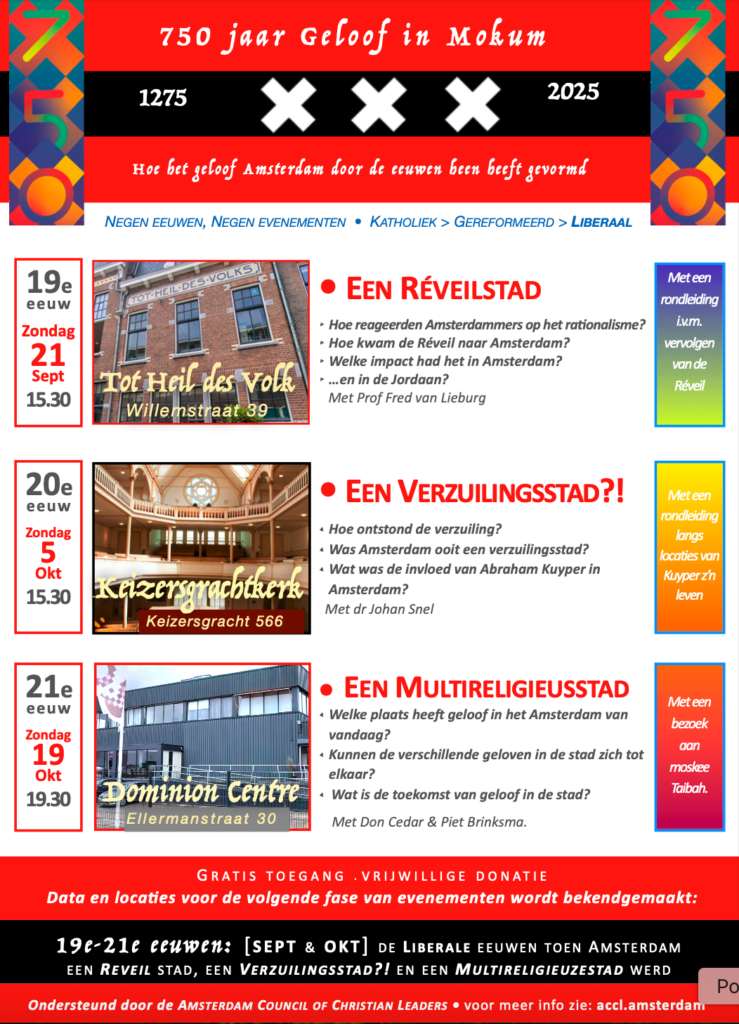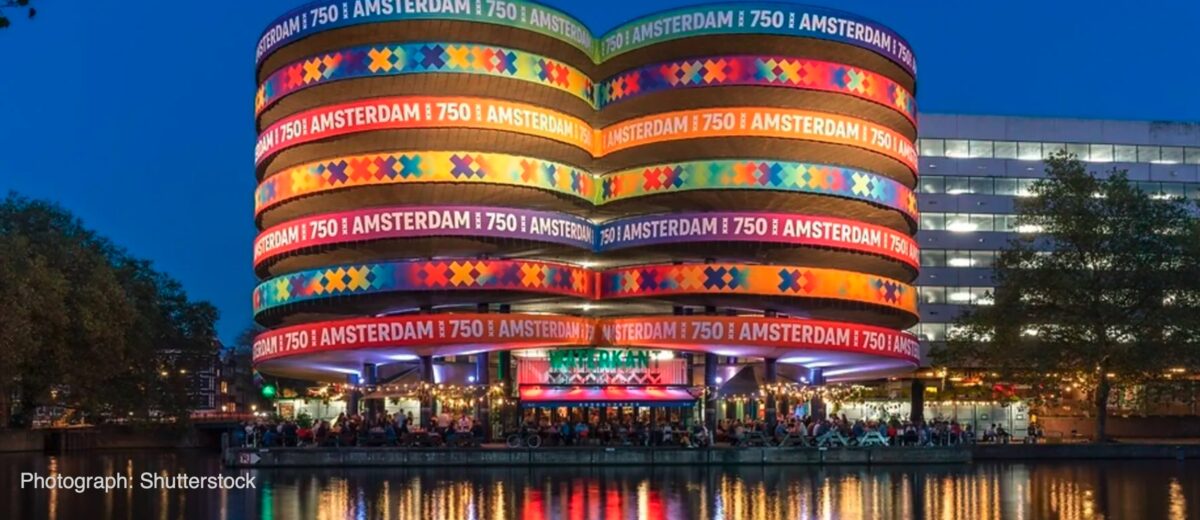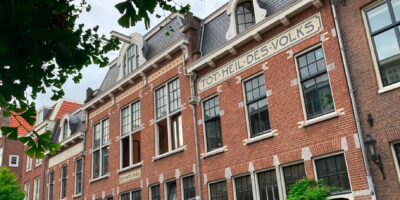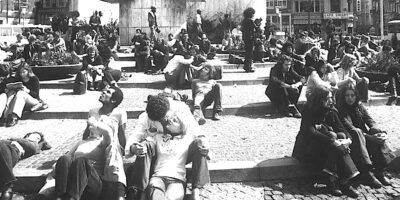Last week we attempted to tell the story of Amsterdam around events unfolding on the Dam over nine centuries. In the heart of the city, we went in search of the soul of the city – that which animated the city, gave it life, values and meaning.
But there is a back story to Amsterdam’s story, which begins with the city’s unique and famous flag: three white crosses on a black stripe through a red background.
What do those crosses mean? Where do they come from?
Nobody knows for sure but it seems the white crosses and the red and black stripes were part of the coat of arms of the knight Jan Persijn, lord of Amstelledamme (the original name for Amsterdam) around 1280.
Tour guides will tell you the crosses offered protection against the three major dangers in Amsterdam’s past – fire, floods, and plague. Others cite the three adjectives Queen Wilhelmina granted as the city’s motto in honour of her resistance to the Nazi occupiers in World War Two: Heldhaftig (heroic) – Vastberaden (resolute) – Barmhartig (compassionate). That of course was only after the war.
What we do know for sure is that these X-shaped crosses are called St Andrew’s Crosses.
Tradition tell us that Andrew, one of the original followers of Jesus, was crucified on an X-shaped cross in Patras, Greece. Which is remarkable, when you think about it. For, like the other followers, Andrew was frightened and disillusioned after the rabbi he had followed for three years had died the shameful, public death of a criminal. His hopes and expectations were painfully crushed.
Strong evidence
Yet something happened that transformed him and the others into bold revolutionaries who began to turn their world upside down! By their own testimony, the risen Jesus had appeared to them – against all expectation, reason and experience – not just once, but on several occasions. He had even eaten with them. This was no mere ghost or apparition. This risen Jesus had then told them to go into all the world to tell people everywhere about his resurrection, and that God had plans for everyone also to have a new beginning, a new life. So that’s what Andrew and the others did for the rest of their lives.
Tradition holds that ten of the eleven remaining disciples (after Judas’ death) were martyred for spreading this story of the risen Jesus. Peter was crucified in Rome, upside down. James (son of Zebedee) was executed by the sword under Herod Agrippa I in Jerusalem (Acts 12:2). Philip was crucified in Hierapolis. Bartholomew (Nathanael) was flayed and/or crucified in Armenia. Matthew (Levi) was stabbed to death in Ethiopia. Thomas was speared to death in India. James (son of Alphaeus) was stoned and clubbed to death in Jerusalem. Thaddaeus was killed in Persia, as was Simon the Zealot (or maybe crucified in Syria). John (brother of James) was the only one believed to have died a natural death (in Ephesus, in old age).
Think about this for a moment. Every one of the disciples stuck to this story of having met the risen Jesus when threatened with martyrdom. Not one cracked and confessed it was a made up story. That is very strong evidence of the truth of their testimony about the Resurrection. The transformation of these frightened, downcast disciples into world-shakers was also already strong evidence that they had all had the same life-changing experience. Their encounter with the Risen Jesus had totally transformed their understanding of reality, of God, and of the future both of the human race and of creation.
Happy beginning
For the resurrection of Jesus was not just a happy ending to his time on earth – it was a happy new beginning for the human race. Paul – himself radically transformed after an unexpected encounter with the Risen Christ on the Damascus road while chasing down Jesus followers – articulated it best. He wrote to the Romans how that ‘we know that the creation itself will be set free from its bondage to corruption’. The resurrection was the turning point in creation history. God had a future of restoration for his creation. He would defeat death and evil for ever.
Paul is credited with bringing this story to Europe. Patrick took this good news to the Irish; Willibrord to those in the Low Countries; Boniface to the Germanic tribes. This story had already begun to transform Rome. It now began to transform people group after people group across the European peninsula.
So by the thirteenth century, when the first Amsterdammers built that dam across the Amstel river, the narrative of the Risen Christ had shaped their understanding of reality, albeit through the sometimes cloudy lens of the medieval Catholic Church.
This year Amsterdammers see the St Andrew’s crosses in all sort of graphic variety, as part of the merchandising of the 750 year anniversary: on posters, banners, shoulder bags, beach towels, buildings, trams and ferries.
Wherever we see them, let’s recall their forgotten testimony: Jesus is risen!

Till next week,



